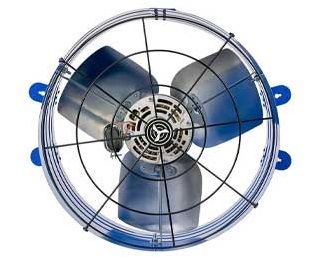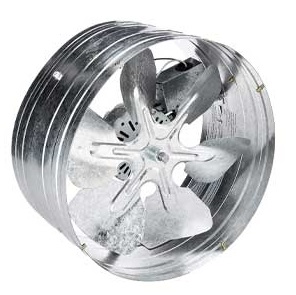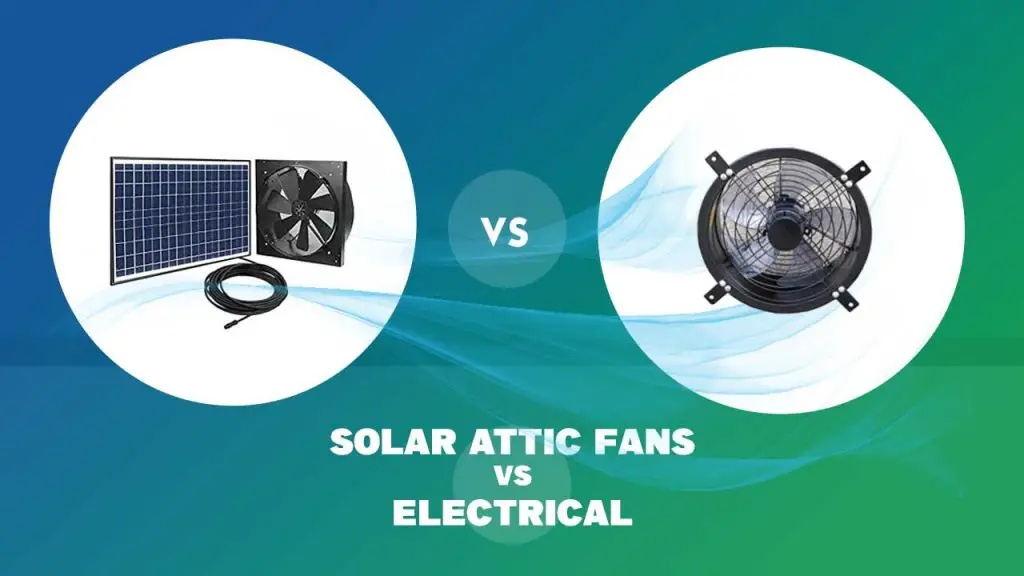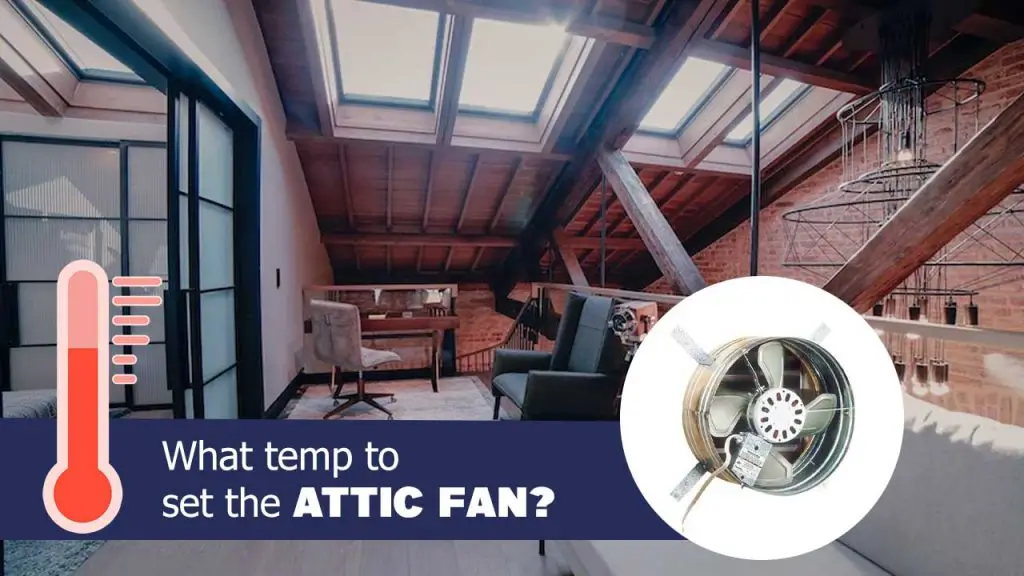Let’s face it, our attic is one of the least used places in our homes. Unless you have a toddler or teenager who loves to crawl around the secret places of the house, or you’ve created a small bedroom or study in your attic, it’s unlikely that you use it daily.
This means the space is mostly left dampened and sometimes hot, and requires a means of ventilation like a fan. An attic fan can make all the difference to keep the air in your attic fresh and cool, while also keeping humidity at comfortable levels.
Like we said earlier, it’s unlikely that your attic is a space you use frequently, so it’s logical to think that having a fan in there is a waste of resources, but it’s not. The more important issue is knowing how long you need to keep the attic fan running.
Should you run it all the time or only for a few hours daily? What if you run it all day? Are there concerns to bother about? What about during summer or winter? These are very important questions and we’ll be sure to provide all the answers you need.
Should Attic Fans Run All the Time?
Not necessarily. Attic fans do not need to run all the time unless you think it is necessary to leave it on continuously. Generally, you should only run your attic fan for as long as you need to.
That is dependent on how quickly it is able to remove the hot and humid attic air and replace it with fresher, drier, and cooler outdoor air.
If you run an attic fan longer than necessary, you’d simply be using up a whole lot of electricity unnecessarily. Depending on the wattage of the unit, this can be a lot of money.
This doesn’t mean you shouldn’t run it for as long as needed if you have trouble with humidity and heat in your attic. Some areas can be quite hot and humid and this can also reflect in parts of your home like the attic.
Besides, most attics are not connected to the central HVAC and do not have their own ACs as well. An attic fan may need to run continuously to keep the space cool and fresh.
The main factors to consider are the temperature and relative humidity of the area to determine how long the fan should run.
Also, you’d be wearing down your attic fan if you run it all the time. This means you’d have to change some of the parts more frequently and also reduce the lifespan significantly.
Can You Leave an Attic Fan on All Night?
If you have to deal with heat in your home at night, then it’s okay to leave the attic fan running all night. This will help to pull out some of the hot air and replace it with cooler air.
But it’s best to use a unit that has an automatic thermostat so that the unit can go off by itself when the desired temperature is achieved.
Generally, it’s not wise to leave an attic fan running all night if your indoor temperature and humidity are just fine. This will make you incur extra electricity charges.
There’s also the risk of damaging the fan motor when you run it continuously, especially at night when no one is awake to detect any anomaly.
This is even worse if you own one of those flimsy, low-quality products. The motor can overheat and blow out.
I advise you to turn it off before you go to bed, especially if you’ll be fine without the fan running. Otherwise, there’s nothing wrong with leaving the attic fan running all night but just be sure it hasn’t been running all day as well.
Running your attic fan will help to keep your indoor climate comfortable, ensuring that you and your family sleep beautifully.
How Long Should My Attic Fan Run?
You should run an attic fan for as long as you need to. This means keeping it on until it’s been able to remove all the stale air in the attic and replace it with fresher outdoor air. This can take 30 minutes, an hour, a few hours, or even the entire day or night.
This also largely depends on the type of attic fan you use, its strength and capacity of the unit, and the size of the attic. There’s also a formula for determining how long you need to run the unit based on the size of the room and the unit’s CFM rating.
You need to ascertain your attic’s size in cubic feet. A simple tape measure would do. Get the measurement of the length, width, and height. The next step is to multiply the width by the height.
If your attic’s gable end is triangular, that would mean half the size. You’d need to divide the result by 2 before multiplying it by the length of the attic.
Assuming you have an attic measuring 36 feet in length, 20 feet in width, and 12 feet in height, you can get the measurement by using the below formula:
(W x H)/2
Therefore;
(20 x 12)/2 = 240/2 = 120
120 x 36 = 4,320 cubic feet
Where the attic’s gable is a regular rectangle, you may not need to divide the sum by 2. Check for the attic fan’s CFM which should usually be on the package or the product’s information if you’re shopping online.
CFM means cubic feet per minute.
Let’s assume the attic fan has a CFM rating of 400. Using our sample attic above, you can determine how many minutes the fan needs to stay on to cover the entire attic by dividing the size of the attic by the CFM of the fan. That is:
4320 ÷ 400 = 10.8 minutes
Using a 400 CFM attic fan in a 4,320 cubic ft attic, you’d only need between 10 and 15 minutes to air out the attic, unless the climate is really hot and humid.
When and How to Use an Attic Fan in Summer?

You’d need to run your attic fan more frequently in summer. Direct sunlight, not enough ventilation, and the heat of the summer can make your attic really hot. Summertime is literally when you need all the cooling you can get.
If you take care of the living room and bedroom without paying attention to smaller and less obvious spaces like the attic, you’d risk having heat sip back into other parts of the house from the attic, which can make your HVAC system work harder than necessary and still not do enough, or even harm the roof of your home.
This is why you need to run a fan in your attic. You must also understand that the heat in every part of your home ends up going up to the attic.
The fan provides the ventilation you need in your attic to keep the temperature down and humidity at a comfortable level. It would be best to use the unit for at least 16 hours if you live in a really hot region.
The other 8 hours should give the fan enough time to rest and recover. You can run the unit all day and turn it off before bed. That keeps the unit working effectively while also ensuring a long lifespan.
When and How to Use an Attic Fan in Winter?
You should use your attic fan when you find mold and mildew growing in your attic. Try and keep it running for as long as you need to let dry air into the attic for breathability and comfort.
An attic fan is also pretty useful during winter. The ventilation provided by the fan can help to reduce moisture as winter months are relatively drier, prevent ice dams, and prevent the buildup of mold and mildew as a result of moisture in the attic.
Another very important use is to prevent wet insulation.
Thermal resistance can be lost when insulation is wet, forcing you to run your heater longer to keep the temperature in balance.
However, with an attic fan, you can avoid running your attic fan continuously and prevent a pile-up of heating costs. Again, ensure you give the unit some time to rest, which can be anything from 6 to 10 hours each day.
When Should I Turn My Attic Fan Off?

Basically, you should turn your attic fan off when you no longer need to keep it running.
If you notice your humidity has dropped below 30% and the air is getting too dry for comfort, it may also be time to turn off the unit and halt ventilation.
Also, if your attic fan has worked for too long, maybe about 25 hours non-stop, it may be wise to give it some time to recover.
It may even heat up and pose a fire threat so it’s best to prevent such a likelihood in the first place.
Final Words:
Generally, there’s no specified duration for how long an attic fan needs to run. Each unit has its own CFM and should be run for as long as heat and humidity need to be pulled out and fresher, drier air is pulled into the attic.
We’ve also provided a formula for how you can calculate how long you need to run an attic fan, based on its CFM and the size of your attic.
The most important thing to note is that attic fans, such as the iLIVING Automatic Gable Mount Attic, help ventilate your attic, but they also need some time off to prevent damage, excessive energy costs, and a shortened lifespan.
| Photo | Title | Buy |
|---|---|---|

|
LEVOIT Air Purifier for Home & Bedroom - For Allergies and Pets Hair | Check Price On Amazon |

|
BREEZOME 60 OZ Quiet Dehumidifiers for Home, Dual-Semiconductor | Check Price On Amazon |

|
AquaOasis™ Cool Mist Quiet Ultrasonic Humidifier for Bedroom & Large room | Check Price On Amazon |

|
43.3'' Portable Air Conditioners, 3-IN-1 Evaporative Air Cooler w/Remote | Check Price On Amazon |

|
BlueDri BD-AS-550-BL Negative Machine Airbourne Cleaner HEPA Air Scrubber | Check Price On Amazon |






